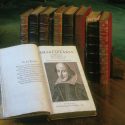Artists and libraries unite in innovative student project
Merging organizational savvy and community outreach, three students in the School of Library and Information Studies (SLIS) have created a resource to connect artists, libraries and the people who love them.
In its own words, the Library as Incubator Project “seeks to learn how artists (writers, visual artists, and performing artists) use libraries in their research, creation, and promotion of their artistic work.” The result: efficient, economical partnerships that can inspire art and library patrons again and again.
“We’re used to thinking of libraries as an incubator for scholarly and personal projects, but not for art and literature,” says Steve Paling, assistant professor in SLIS and the project’s current adviser. “This is a new perspective. It’s great to see such a unique resource.”
The site is a clearinghouse for ideas shared between any number of users. Artists promoting their work can submit descriptions of what they might offer to libraries or school programs. Teachers can glean ideas about integrating visual, performing and literary arts into their lessons; libraries can learn how to broaden services.
Even those with little connection to libraries or the arts can participate, providing valuable feedback that can help drive patron-centered programming.
“Our role is creating connections between people, resources, step-by-step instructions,” says Erinn Batykefer, one of the co-founders. “I would like people to see this as something that’s not ours but theirs.”
Two of the three founders have artistic backgrounds that inform their work. As a theatre major at Beloit College, Laura Damon-Moore spent much of her time assisting a faculty playwright in research. Batykefer, who had received her MFA in poetry at UW–Madison, worked at a poetry center where public outreach played a central role. Christina Endres, meanwhile, came to SLIS after volunteering for Americorps in a California school program with a strong literacy component.
The project began in May, when Damon-Moore and Endres surveyed a network of local artists about their connection to libraries. Interviews began in person but quickly progressed to a more formalized surveys as the pair added more subjects. When Batykefer joined, she brought a variety of contacts in the writing world; the survey migrated to use an online tool.
“If you look at our survey responses, not every artist uses libraries in the same way,” says Damon-Moore. “We want to develop a community and a conversation that’s ongoing.”
The months spent organizing content paid off when the site went live in October. A wide box draws the eye with a rotating array of photos and interviews with artists. Tabs targeting different groups — but accessible to all — share successful programs and ideas for working with particular constituencies. Other highlights include descriptions of existing art/library connections and pre-made “kits.”
“Kits are fun,” says Batykefer. “We can ask artists to generate kits for us — ‘What would you love to do at a library?’ — and then we can use it as a template for librarians to pick out. They look at it and say, ‘Hmm. If we’re having an artist here, this could really help us.’”
Madison author (and UW–Madison alumna) Rita Mae Reese uses fragments of other literature to inspire her work. Her first book, “The Alphabet Conspiracy,” was published by a small press with few promotional resources. With two small children, Reese knew she couldn’t spend much time away from home on a promotional book tour.
Reaching out to the project, Reese created a kit called “Primary Sources: A Poetry Workshop Or, How to Steal Your Next Great Idea From The Library Stacks.” Usable on its own and easily downloadable, the kit is also the basis for a workshop that Reese herself can present in schools, libraries and other local settings.
For nonprofits and artists who must make every dollar count, the site offers myriad opportunities to get their work into the public eye. But it also represents a way to share the wide spectrum of what libraries can bring to a community. This is crucial at a time when every public expenditure may face scrutiny.
“A lot of people don’t understand all that libraries do. Your tax dollars are worth it. You’re getting a return on your investment,” says Damon-Moore. “When budgets for libraries and arts coalitions are being gutted, these two entities can combine, support and promote each other.”
In addition to honing their advocacy techniques, the students push each other to learn and apply new skills. They have tinkered with back-end web design and perfected the site’s look and feel. Meanwhile, they have organized the site for easy navigation through what is already a treasure trove of relevant content.
“It’s been a bottom-up effort, almost entirely student-generated — conceptualizing, promoting, designing,” says Paling. “It gives me a lot of confidence for the project’s durability in the future.”
Looking down the road, Batykefer describes a website called Awful Library Books, where librarians spotlight some of the books they have removed from their collections (and why). Though outmoded illustrations might make site visitors laugh, the creators have become well known for teaching the practice of professional collection development.
“Through that website, they’ve built careers,” says Batykefer. “That’s our benefit. We see this as our career here. It’s the beginning.”

